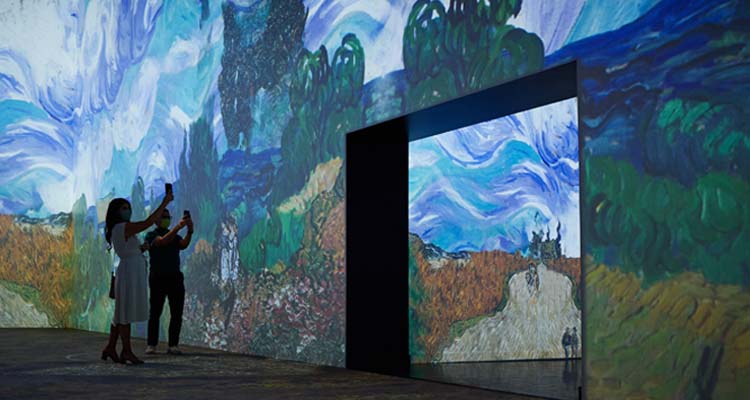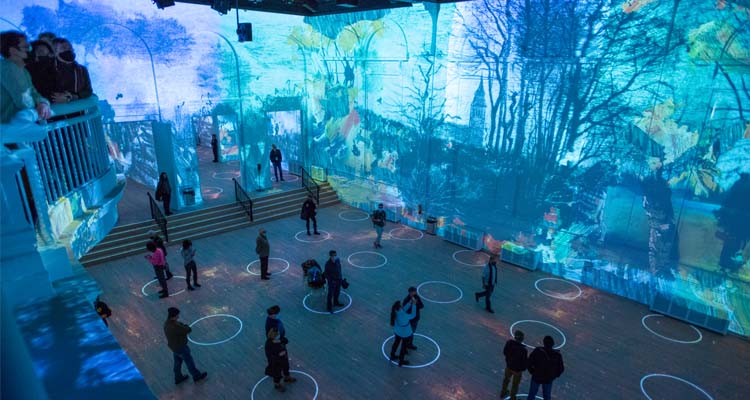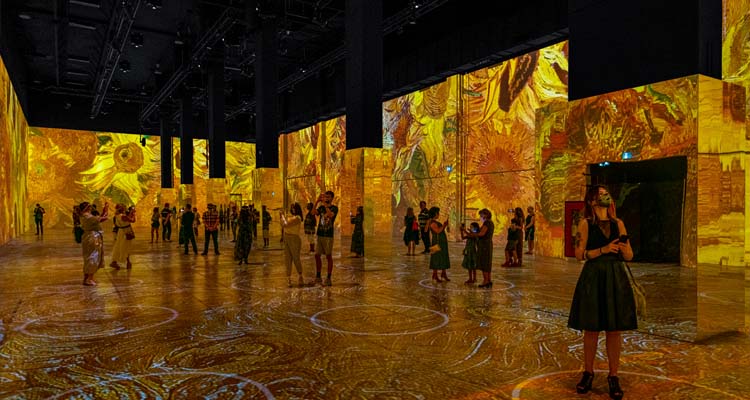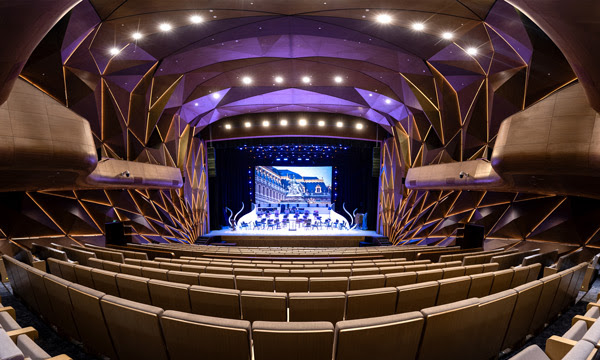Meyer Sound Loudspeaker Systems Expands Impact of ‘Immersive Van Gogh’ Exhibits
 The Immersive Van Gogh exhibitions currently selling out in nine North American cities are coming to at least eight more before the end of 2021. What the visitors hear is integral to the complete experience, with the all-enveloping projections of the legendary artist’s paintings enhanced by an original musical score reproduced through Meyer Sound loudspeaker systems. All audio and video technology for the nationwide rollout is supplied and installed by Production Resource Group, L.L.C. (PRG).
The Immersive Van Gogh exhibitions currently selling out in nine North American cities are coming to at least eight more before the end of 2021. What the visitors hear is integral to the complete experience, with the all-enveloping projections of the legendary artist’s paintings enhanced by an original musical score reproduced through Meyer Sound loudspeaker systems. All audio and video technology for the nationwide rollout is supplied and installed by Production Resource Group, L.L.C. (PRG).
Immersive Van Gogh is produced by Toronto-based Lighthouse Immersive. The company’s director of production, Sean Richards, is charged with the supervision of technical systems at all locations. Richards noted that while the importance of visuals is obvious, the role of audio often is overlooked. “No film since the 1920s has been silent, and even prior to ‘talkies,’ live music accompanied the silent films — for good reason,” he said. “The effect of well-designed music is inseparable from the visuals. That is why we spare no cost in offering the best possible audio experience for our patrons.”
“I was assigned by PRG to take the lead in audio design for all the new systems starting from April of this year,” said Douglas Plander, audio technical coordinator for the company. “As the number of cities expanded rapidly, the producers stressed the critical importance of making sure the technical quality was consistently high at all locations. I needed a flexible toolset based on loudspeakers with consistently predictable response. Also, a self-powered solution was important as we don’t want to deal with massive amplifier racks up in the server room. Both of these requirements pointed to a Meyer Sound self-powered solution.”

“We typically work in large, acoustically challenging spaces,” said Richards. “With Meyer Sound, the combination of continually improved versions of enclosure designs, excellent mapping and space design software and acoustically flat speakers makes it possible to avoid many difficulties that we would expect in our venues. This consistency and ease of implementation has greatly benefited our nationwide rollout, making these systems a great investment.”
Plander expects a combined total of nearly six hundred loudspeakers to be installed in the various exhibitions by year’s end. The leased venues in each city vary in size and layout, with the 45-minute show running sometimes in a single room but usually in multiple galleries, up to four simultaneously.
“While the shows are the same everywhere, each venue is different,” said Plander. “The size of the rooms, height of speaker locations and number of speakers all factor into the design for each venue. We usually have 16 to 24 speakers per room, but we have only ten in one of the small rooms in Dallas and 40 in one very large room in Phoenix.”
The recently opened Dallas venue provides an example of how the Immersive Van Gogh experience scales to different room sizes, offering visitors an alternate experience of the same content. The show is presented in a large middle gallery (95 feet by 105 feet with a 28-foot ceiling) and two identical smaller galleries (60 square feet with a 16-foot ceiling). The smaller galleries each utilize nine ULTRA-X20 loudspeakers with one USW-112P for low-frequency extension. The large gallery deploys 12 ULTRA-X40 loudspeakers, two ULTRA-X20 loudspeakers for the mezzanine viewing area and four USW-112P subwoofers.
“Because of the matched response of the two ULTRA-X models, the sound blends smoothly from the small room into the larger, with the same tonal balance and levels,” said Plander. “But because the acoustic spaces are very different, the small one feels like an intimate jazz club while the large room feels more like a rock concert.”

Playback for both audio and video is through PRG’s proprietary Mbox media server. As currently configured, the networked audio systems are in stereo, with loudspeakers paired as L-R-L-R across a room. However, as stipulated by the producers, the systems may require upgrading to multichannel formats on short notice.
“We were told that our systems might have to accommodate up to 64 discrete playback channels,” said Plander. “That was another reason we rely on the Meyer Sound self-powered solution. If the producers and composer want to change to, say, a 4.1 system, all we have to do is re-map the channel assignments and we can do immersive panning and surround effects. We don’t have loudspeakers doubled up on amplifier channels, or bi-amplified systems split across amplifiers, as might be the case with conventional solutions.”




